This article is more than 5 years old.
Frankenstein; or, The Modern Prometheus. London: Lackington, Hughes, Harding, Mavor, & Jones, 1818.
“I had worked hard for nearly two years, for the sole purpose of infusing life into an inanimate body. For this I had deprived myself of rest and health. I had desired it with an ardour that far exceeded moderation; but now that I had finished, the beauty of the dream vanished, and breathless horror and disgust filled my heart.”
Mary Shelley‘s tale of the chemist Victor Frankenstein and his nameless creature is considered by many to be the first science fiction novel. The story of the brilliant but overreaching Frankenstein and his misunderstood monster has fascinated readers and critics for nearly 200 years.
The origin of Frankenstein; or, The Modern Prometheus is one of the more famous stories in English literature. The 18-year-old Mary had fled to the continent with her married lover, the poet Percy Bysshe Shelley. They spent the summer of 1816 near Geneva, where they met the already infamous Lord Byron and his personal physician and traveling companion John William Polidori. The friends had been reading “some volumes of ghost stories, translated from the German and French” and discussing recent experiments by Erasmus Darwin and others with galvanism-the reanimation of dead tissue by electrical current-when one rainy night Byron challenged them each to come up with a ghost story. Mary was the only one to complete her story, the first version of Frankenstein.
As Mary later described it, the story came to her in a vivid waking dream:
“I saw the pale student of unhallowed arts kneeling beside the thing he had put together. I saw the hideous phantasm of a man stretched out, and then, on the working of some powerful engine, show signs of life, and stir with an uneasy, half-vital motion. Frightful it must be; for supremely frightful would be the effect of any human endeavor to mock the stupendous mechanism of the Creator of the world.”
In the preface to the 1831 edition, Mary claimed that she intended her story to be “but of a few pages… a short tale.” But Percy Shelley encouraged her to develop Frankenstein into a full-length novel and seek publication. The manuscript, completed in 1817, was first rejected by Byron’s publisher John Murray, but eventually published on January 1, 1818 by the smaller firm of Lackington, Hughes, Harding, Mavor & Jones.
The first edition was issued in three volumes, a form that was becoming the standard for 19th century novels. Mary dedicated the book to her estranged father, the radical philosopher William Godwin.
Mary Shelley’s “hideous progeny” was immediately popular with the reading public. Imitations and dramatic adaptations appeared within a few years of the first edition.
Critical reviews were mixed. The first edition was published anonymously, which led to much speculation about the author’s identity. Even after Mary’s name appeared on the title pages of later editions some readers refused to believe that the book had been written by a young woman. Various critics have argued that Percy Shelley edited the published version of Frankenstein so substantially that he should be considered the true author. But recent studies of the earliest manuscripts, now in possession of the Bodleian Library, vindicate Mary’s assertion that “I certainly did not owe the suggestion of one incident, nor scarcely of one train of feeling, to my husband.”
A second edition of Frankenstein was published in 1831, after the death of Percy Shelley. The 1831 text was considerably altered by Mary Shelley, and until recently it was the most frequently read and reprinted version of the novel.
Wake Forest’s first edition of Frankenstein is part of the Charles H. Babcock collection.

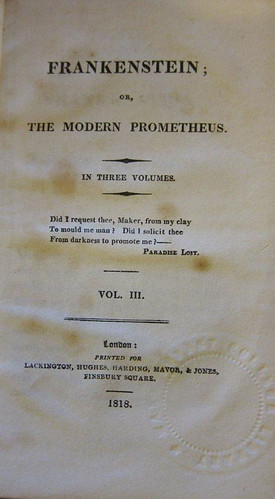
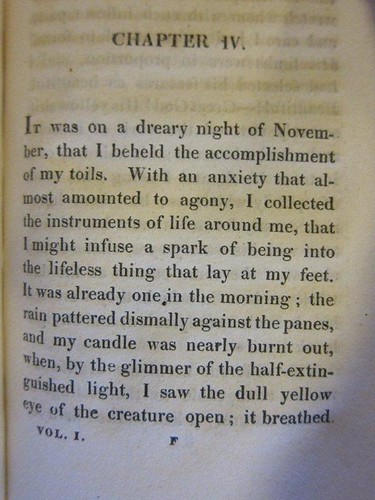
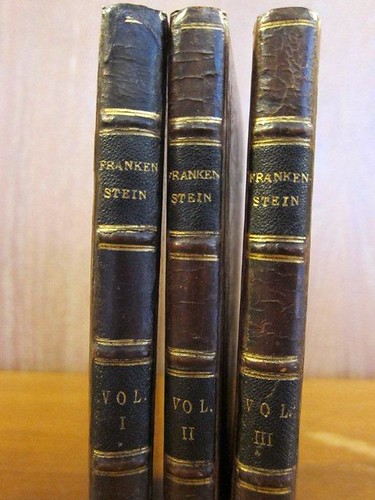
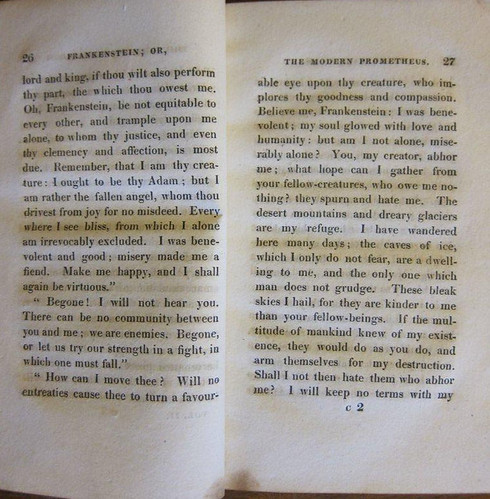
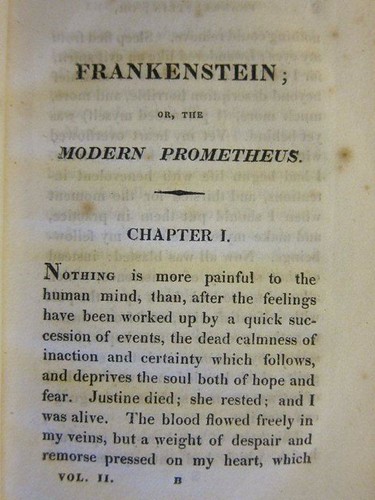
2 Comments on ‘Rare Book of the Month: Frankenstein; or, The Modern Prometheus, by Mary Shelley’
I really enjoyed reading this post and reading the links provided. Thanks Megan!
What was the name of the competition the Frankenstein book was in.
Who were the other authors Mary Shelly competed with?